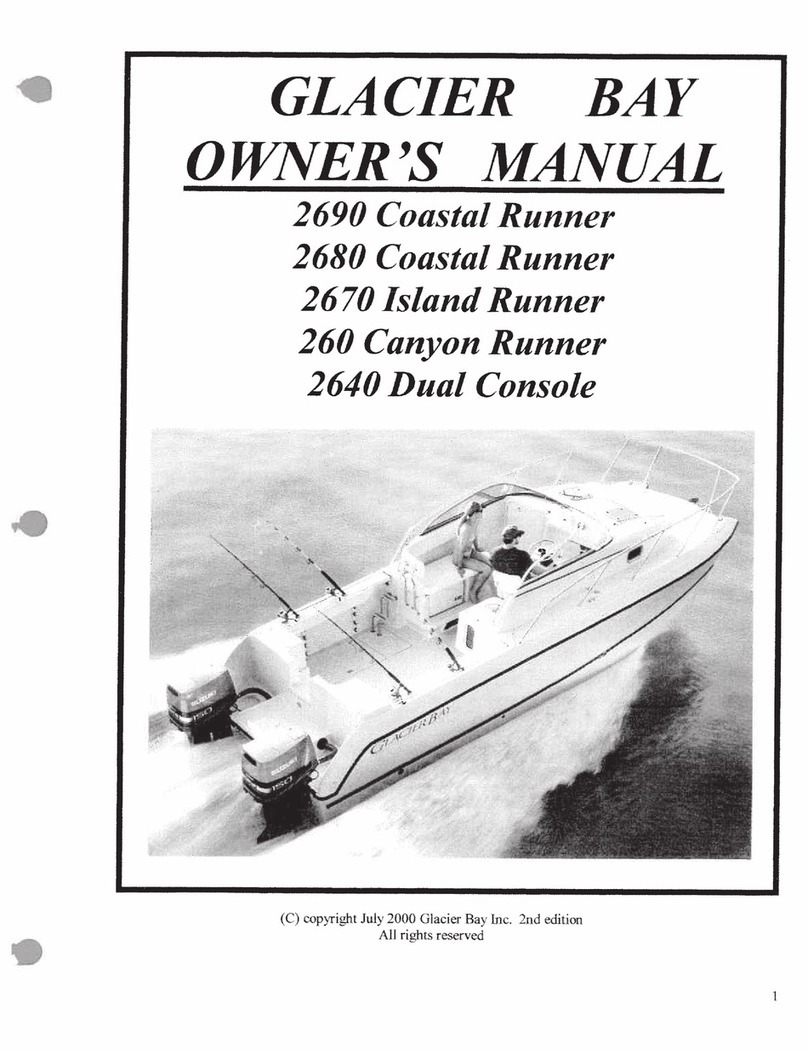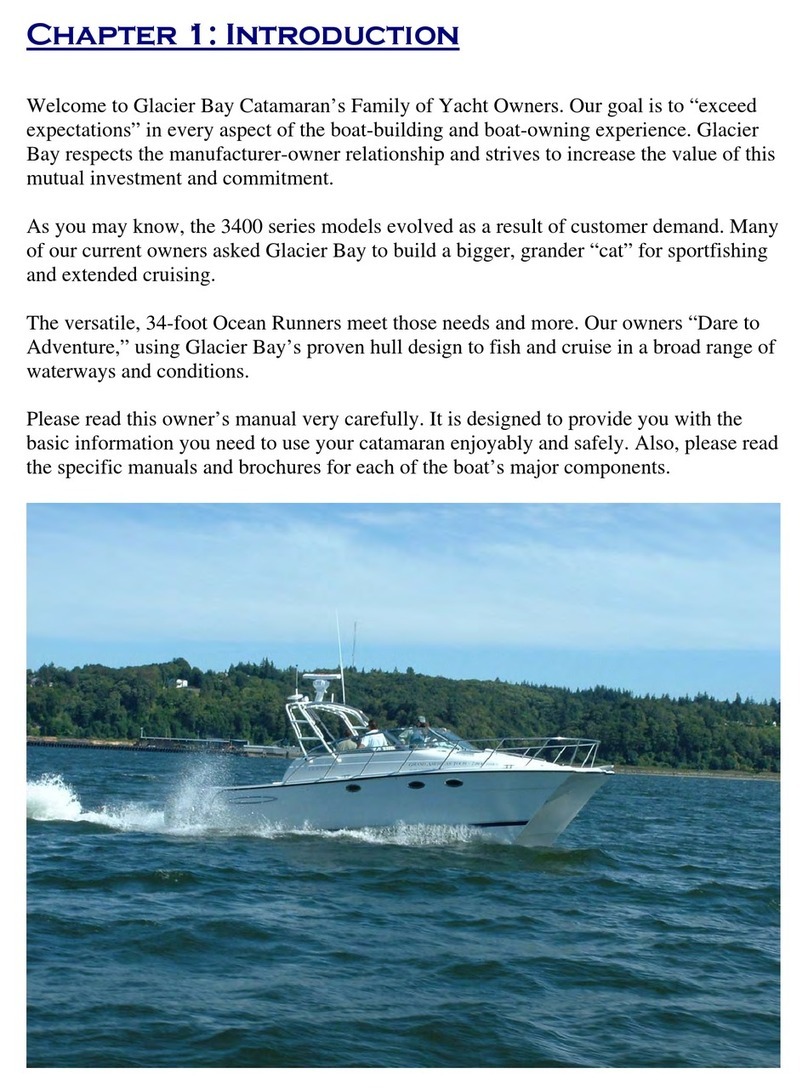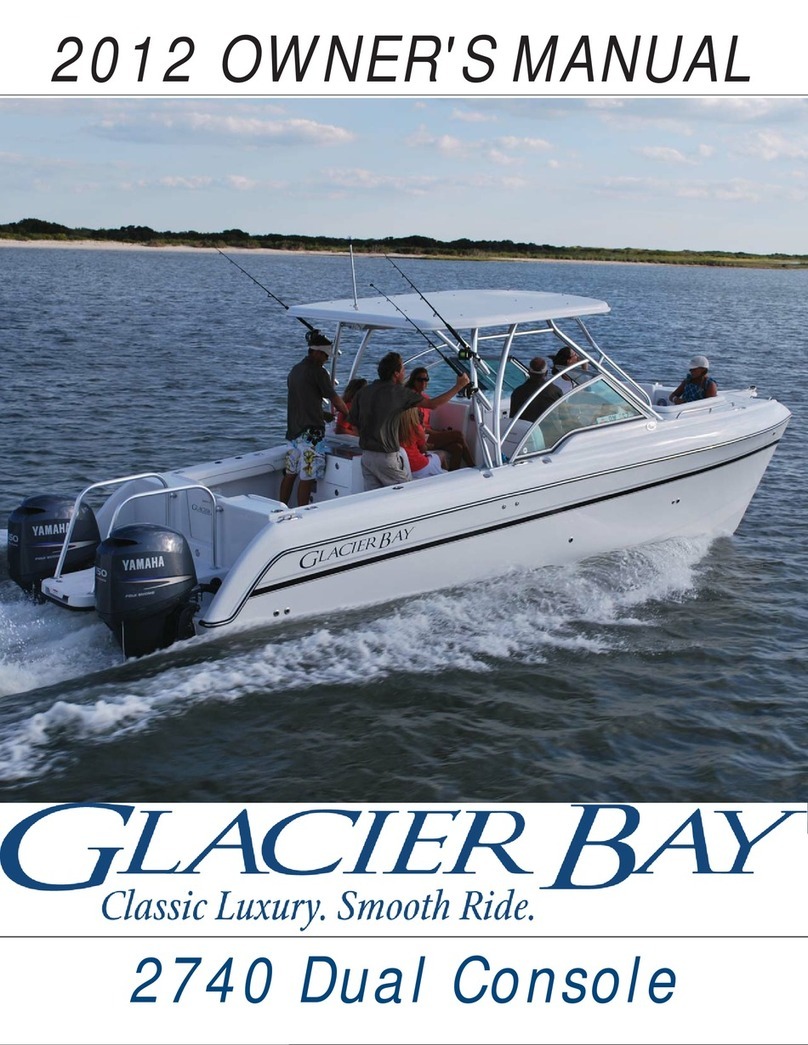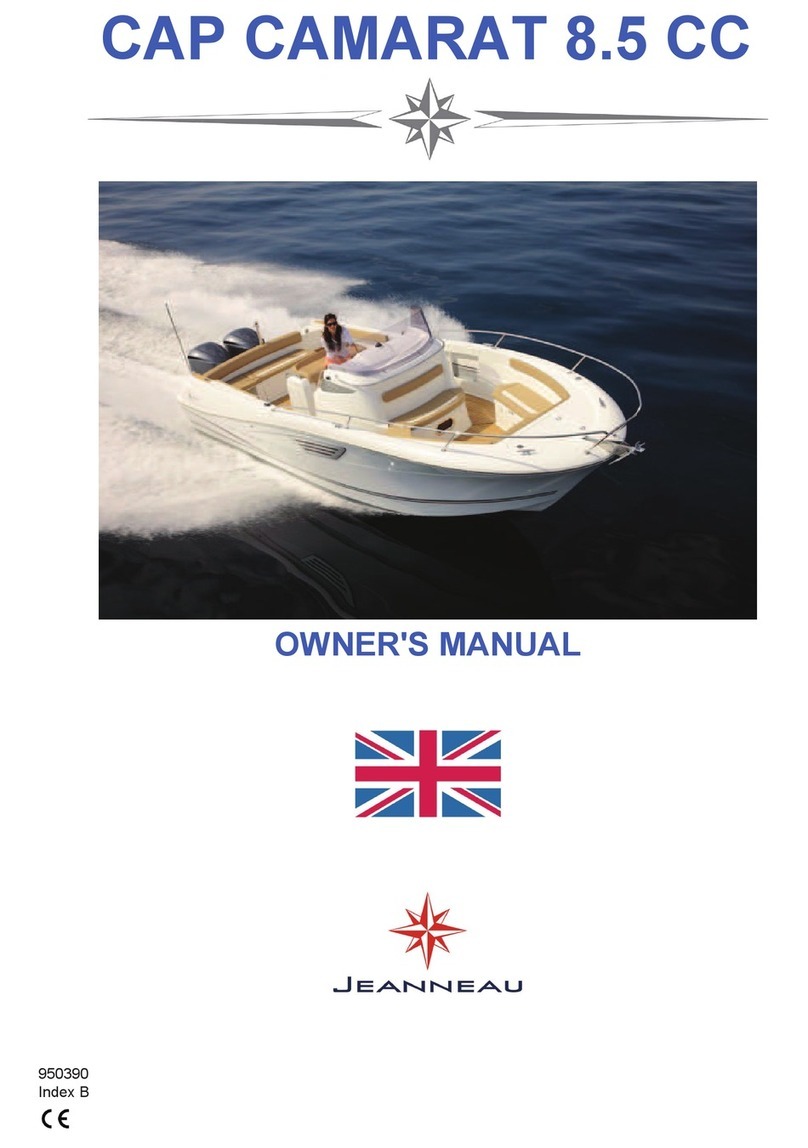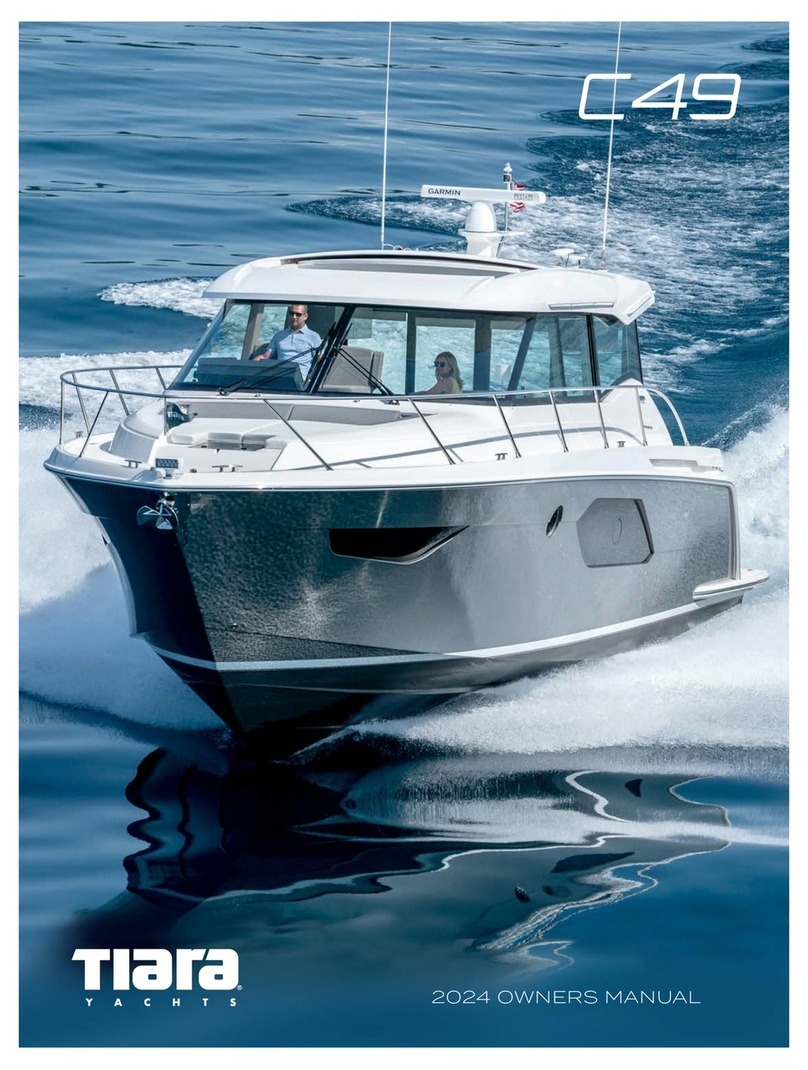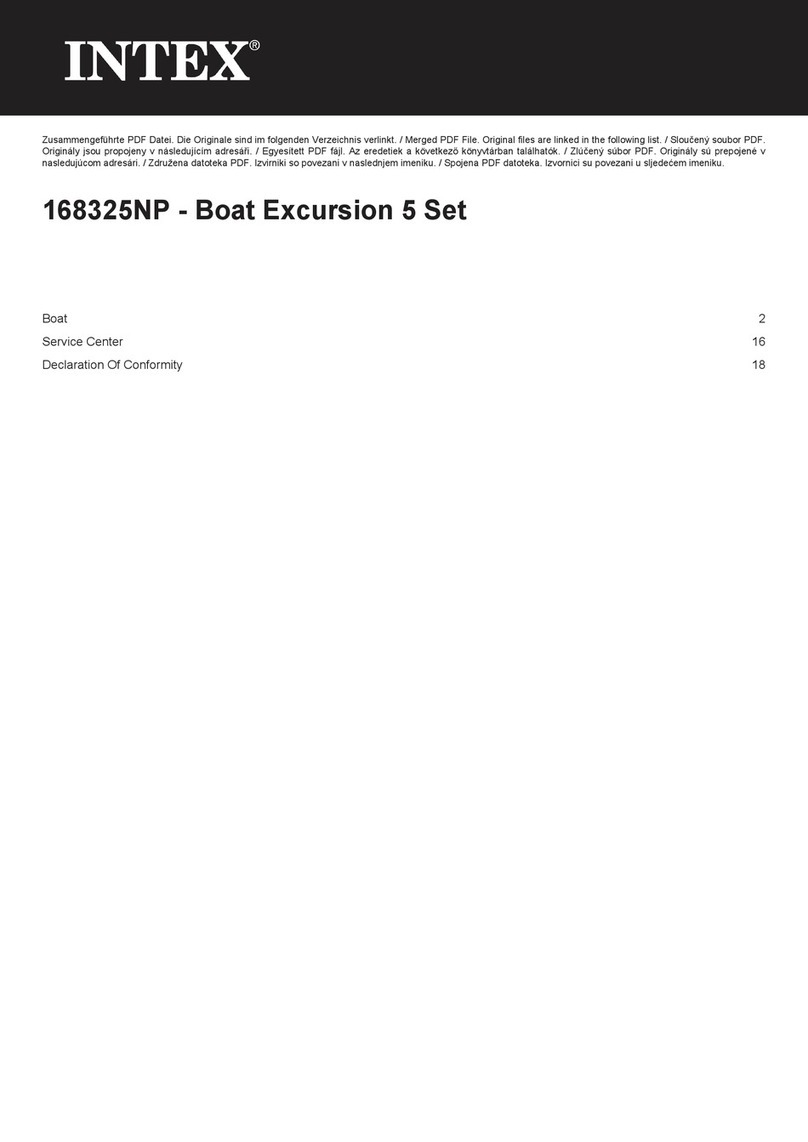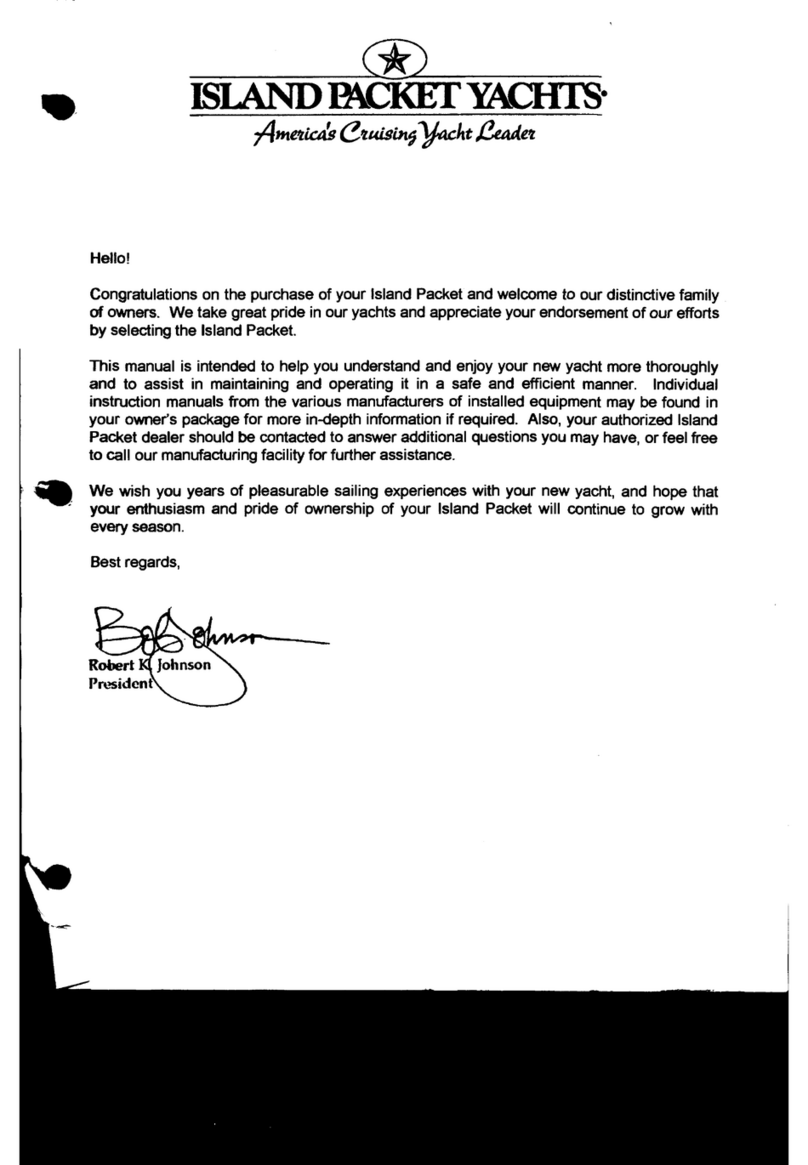
2013 Glacier Bay 2780 Owners Manual
5.4 Steering Controls .............................................................................................................................5-19
5.5 Steering Maintenance.......................................................................................................................5-20
!!! CAUTION...........................................................................................................................5-20
5.6 Steering System Diagram - Standard...............................................................................................5-21
5.7 Steering System- Bleeding Instructions...........................................................................................5-22
NOTICE.................................................................................................................................5-22
5.7.1 Step 1.........................................................................................................................................5-22
5.7.2 Step 2.........................................................................................................................................5-22
5.7.3 Step 3.........................................................................................................................................5-22
5.7.4 Step 4.........................................................................................................................................5-22
5.8 Power Steering System Diagram.....................................................................................................5-23
5.9 Power Steering System- Bleeding Instructions................................................................................5-24
NOTICE.................................................................................................................................5-24
5.10 Handling Characteristics...............................................................................................................5-25
5.10.1 Turning Characteristics..........................................................................................................5-25
5.10.2 Adverse Sea Conditions.........................................................................................................5-25
5.10.3 Boating Tips...........................................................................................................................5-25
5.11 Performance Factors.....................................................................................................................5-26
5.11.1 Engine Efficiency...................................................................................................................5-26
5.11.2 Propeller Condition................................................................................................................5-26
5.11.3 Weather Conditions ...............................................................................................................5-26
5.11.4 Load .......................................................................................................................................5-26
5.11.5 Marine Growth.......................................................................................................................5-26
5.11.6 Bottom Paint ..........................................................................................................................5-26
Chapter 6: Systems Information..............................................................................................................6-27
6.1 Overview..........................................................................................................................................6-27
6.2 Fueling Guidelines...........................................................................................................................6-27
!!! WARNING.............................................................................................................................6-27
!!! DANGER...................................................................................................................................6-27
6.2.1 Before Fueling...........................................................................................................................6-27
6.2.2 During Fueling ..........................................................................................................................6-27
6.2.3 After Fueling .............................................................................................................................6-27
6.3 Fuel System......................................................................................................................................6-27
6.4 Electrical System .............................................................................................................................6-28
6.5 Battery System.................................................................................................................................6-29
6.5.1 Emergency Parallel ...................................................................................................................6-29
6.5.2 Anchor Windlass.......................................................................................................................6-29
!!! DANGER...................................................................................................................................6-29
6.6 Battery Selection..............................................................................................................................6-29
6.7 Battery Care .....................................................................................................................................6-30
!!! DANGER...................................................................................................................................6-30
6.7.1 Safety.........................................................................................................................................6-30
6.7.2 Exposure....................................................................................................................................6-30
!!! CAUTION...........................................................................................................................6-30
!!! CAUTION...........................................................................................................................6-30
6.8 Wiring and Circuit Protection..........................................................................................................6-30
6.9 Control System.................................................................................................................................6-31
!!! CAUTION...........................................................................................................................6-31
Page 1-3






